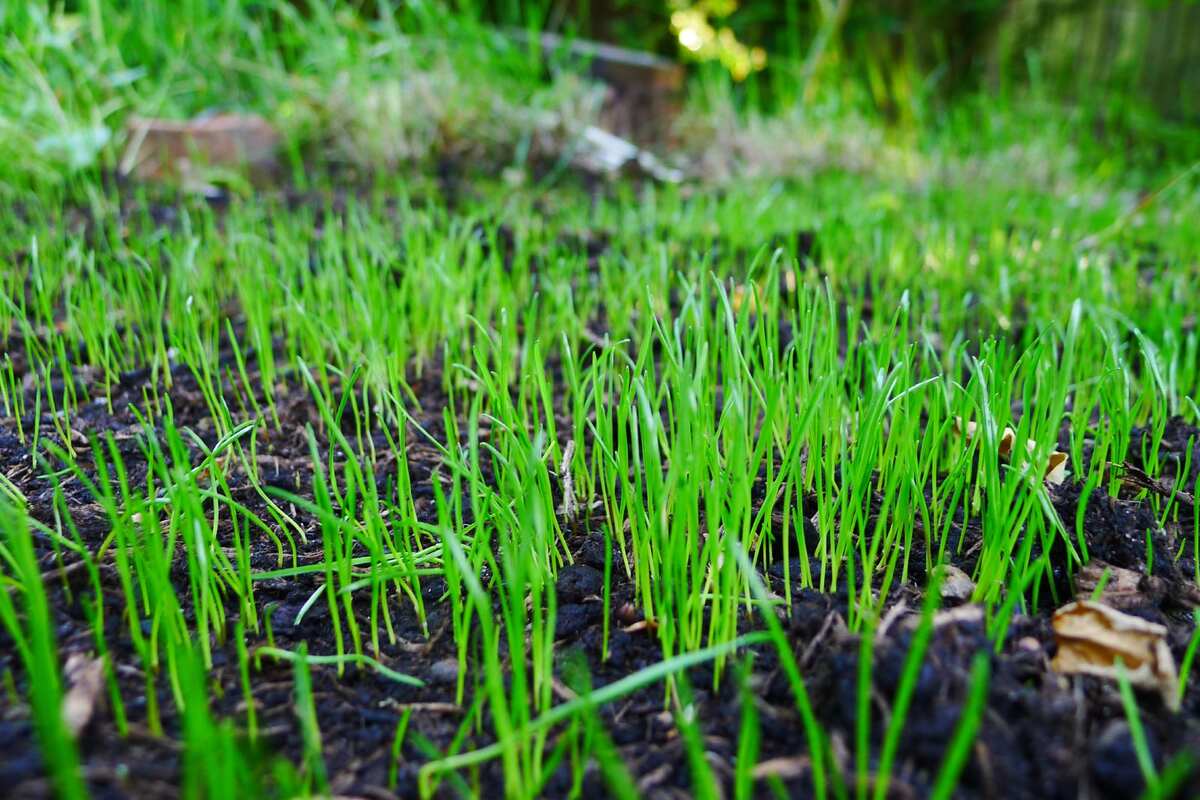
Knowing how to care for new grass can help you achieve a healthy lawn. This involves proper watering and mowing. Also, avoid foot traffic and protect the new sprouts from weeds.
During this make-or-break phase, you’ll also want to help your lawn develop a healthy root system by providing it with the right nutrients.
| Project Difficulty: Intermediate Estimated Time to Complete: 6 to 8 weeks Project Cost: Professional mowing costs around $36 to $105, while fertilization can cost between $103 to $343. For more details, check our lawn care cost pricing guide. |
How to Care for New Lawns
After planting grass seeds, you can expect to see new sprouts within 5 to 30 days (depending on the grass type and soil conditions). Once your new grass sprouts, it’s time to perform these essential lawn care tasks during the first month.
Once the grass is ready for its first mow, hire a local lawn care professional to care for your new grass going forward.
Fertilize
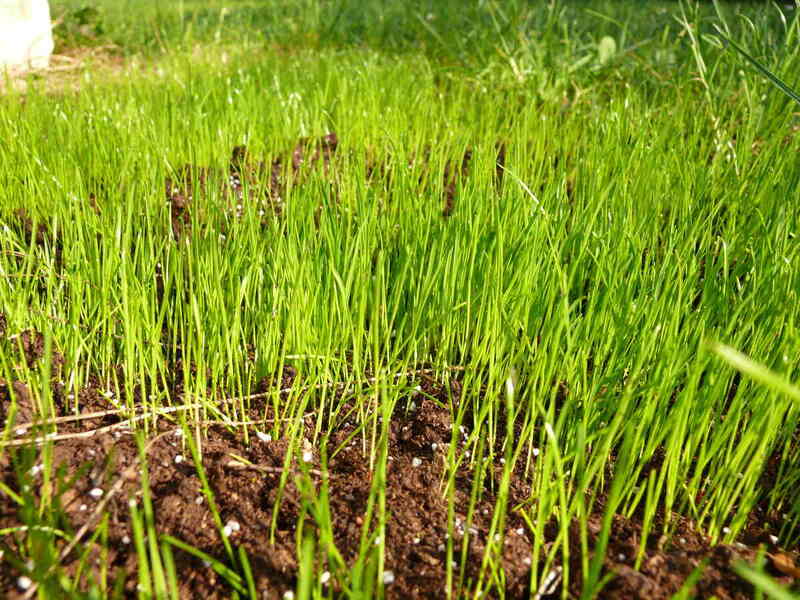
Don’t be tempted to feed your lawn with a blast of organic or synthetic fertilizers to give your new sprouts a good head start. You should only add starter fertilizer as recommended in your soil test report. And remember to read and follow the instructions on the label.
Additionally, if you’ve already applied a starter fertilizer before planting your grass seed, wait 6 to 8 weeks before applying regular lawn fertilizer. Even so, remember to test your soil first to see which nutrients it needs, or follow the recommendations on your latest soil test report. Remember, adding too much plant food can lead to fertilizer burn.
Note: The best fertilizer for new grass will depend on your lawn’s needs and the current condition of your soil. Having a lawn care pro read your latest soil test report will help them design a fertilization program suited for your lawn.
See Related:
Water
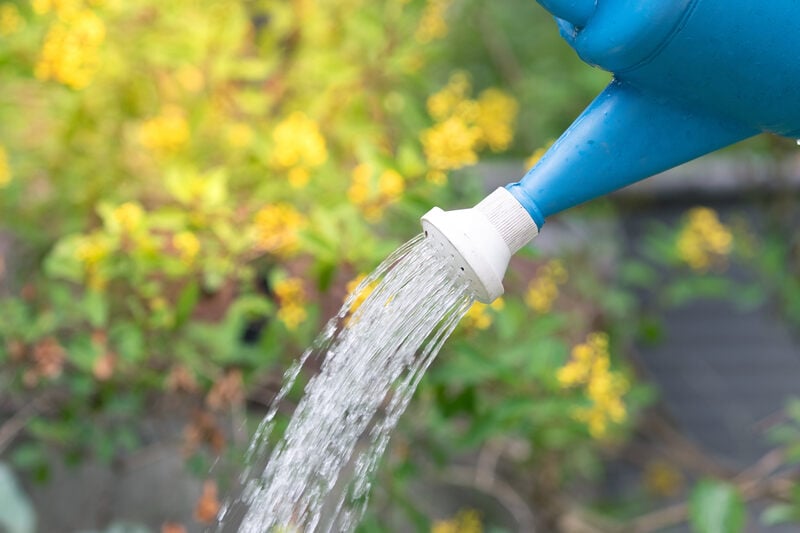
Infrequent but deep watering is essential for maintaining a lawn, but this technique doesn’t apply to new grasses.
Once your new grass sprouts, you should follow this watering schedule:
- Week 1-2: Water 2 to 4 times a day to keep the soil moist around 1.5 inches deep. Each watering should last 5 to 10 minutes.
- Week 3-4: Reduce your watering to once per day. But if the weather is hot, you can do it twice daily.
- Week 5-6: Water infrequently but deeply. You can water every other day but soak your lawn for around 40 minutes each time.
- Regular watering: Once your lawn is established after the sixth week, you can water once or twice a week — providing your lawn with 1 to 1.5 inches of water per week.
Note: Overwatering your new grass can cause your grass to grow in clumps. If you missed a day of watering, just continue watering as usual and ensure the soil is consistently moist. Or if rain is in the forecast, you can skip your watering session for those days.
See Related:
- How Often to Water Grass Seed
- How Often Should I Water My Lawn?
- How to Plan and Install a Home Lawn Sprinkler System
Avoid Foot Traffic

To avoid killing your new grass, it’s crucial to keep foot traffic on a new lawn to a minimum or avoid it altogether.
When people or pets walk on grass, the soil gets pressed together, which results in soil compaction. This reduces the spaces where water can pass through, making it hard for water to penetrate deeply.
Foot traffic is especially harmful to new grasses because it physically disrupts the delicate root systems that are still developing, hindering their ability to absorb water and nutrients effectively.
My Tip: Since you can’t monitor your lawn 24/7 to prevent foot traffic, you can place a large “Keep off the grass” sign along the perimeter.
Mow
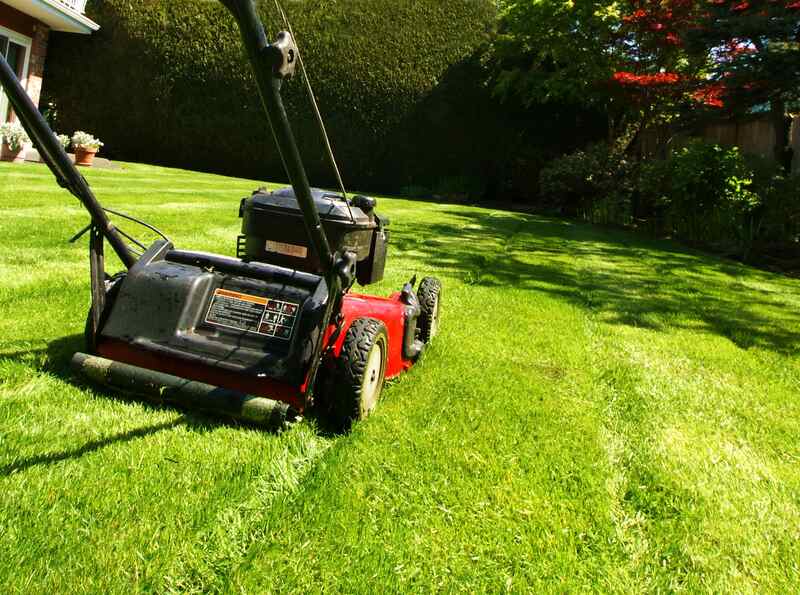
Timing is essential for your first mowing. Waiting too long to mow new grass is not a good idea because an overgrown lawn is unsightly and can result in a weak root system. On the other hand, mowing too early can expose the soil and potentially damage the root system. Generally, you should wait 2 to 4 weeks before mowing your new lawn.
The height of your grass will give you a clear signal when it’s time for the first mow. Here’s a quick overview, including the ideal mowing height for the most popular grass types:
| Type of Grass | Recommended Height Before First Mow | Recommended Mowing Height |
| Bahiagrass | 4 – 5 inches | 3 – 4 inches |
| Bermudagrass | 1.5 – 2.5 inches | 1 – 2 inches |
| Buffalograss | 1.5 – 3 inches | 1 – 2 inches |
| Centipedegrass | 1.5 – 2.5 inches | 1 – 2 inches |
| Fine fescue | 3 – 5 inches | 2.5 – 4 inches |
| Hard fescue | 2 – 3 inches | 1.5 – 2.5 inches |
| Kentucky bluegrass | 2.5 – 4 inches | 2 – 3 inches |
| Perennial ryegrass | 2 – 3 inches | 1.5 – 2.5 inches |
| St. Augustinegrass | 3 – 4 inches | 2.5 – 3 inches |
| Tall fescue | 2 – 4 inches | 1.5 – 3 inches |
| Zoysiagrass | 1 – 1.5 inches | 0.5 – 1 inch |
The following pointers can help you mow your lawn the right way:
- Wait until your grass grows to about one-third taller than its recommended mowing height before cutting it. For example, if the recommended mowing height for your grass type is 1.5 inches, let it grow to 2 inches before mowing it for the first time.
- Avoid mowing wet grass to prevent grass clippings from clumping together and attracting diseases and pests. Also, wait until the soil is dry before mowing. You don’t want to leave ruts when pushing your lawn mower on the lawn.
- Don’t use a mower with dull blades, as it can leave jagged edges and make your new grass susceptible to diseases. So, sharpen your mower blades before mowing.
- Avoid mowing your lawn between 6 a.m. and 8 a.m., when there’s still dew on the grass. The best time to mow your lawn is between 8 a.m. and 10 a.m. or between 4 p.m. and 6 p.m.
See Related:
- How and When to Cut New Grass
- When to Mow After Overseeding
- What is the One-Third Rule for Mowing Grass?
Manage Weeds
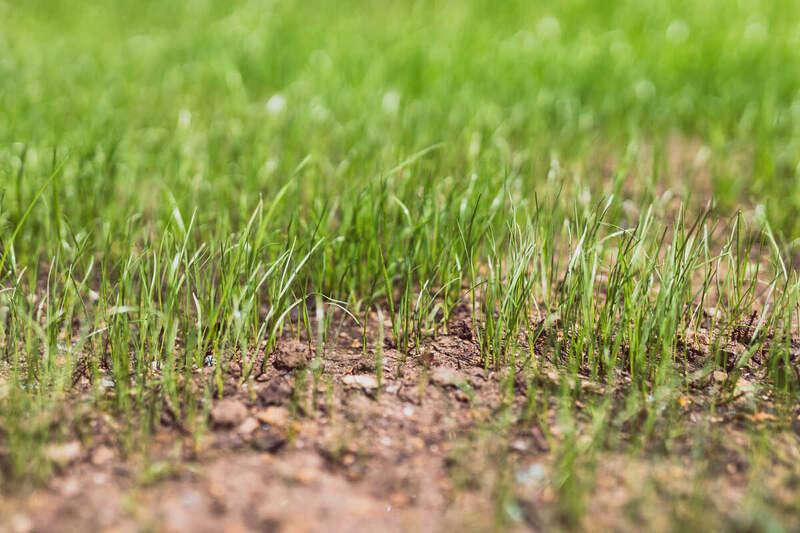
Even before your grass seeds sprout, weeds can start competing with them. With a combination of moist, nutrient-rich soil, conducive temperatures, and plenty of sunlight, weeds can have a grand time germinating and spreading.
So, if you start seeing weeds on your lawn before your new grass’s first mow, you should hand-pull them right away. If you’re thinking of using an herbicide, stop. Only after you’ve mowed your grass a few times (around 6 to 8 weeks after planting the grass seed) should you consider applying post-emergence herbicides.
As with fertilizers, remember to read the instructions carefully and follow them when adding herbicides to your new lawn.
Ongoing Maintenance
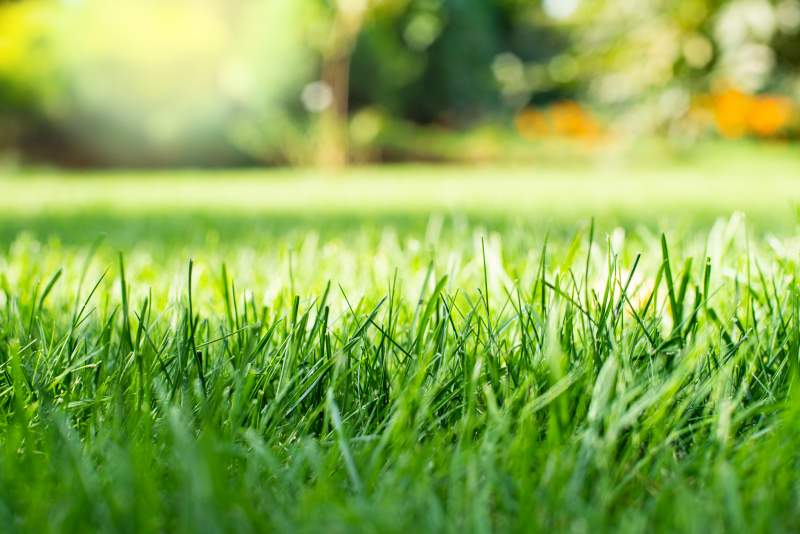
You can consider the fourth mow as a commencement exercise — your new grass has now graduated from being “new.” Now’s the time for your young greens to face the real world, and this is where ongoing maintenance comes in.
Apart from regular watering and mowing, you’ll also need to observe your lawn and be vigilant about common problems that may occur, such as weeds and lawn pests. With your grass still within the growing season, you can apply post-emergence herbicides if you notice any weeds sprouting up.
See Related:
- Read Your Weeds: Identify Them to Learn About Your Lawn’s Health
- How to Get Rid of Weeds in Your Grass
- Common Insect Pests Damaging Your Lawn
- Summer Lawn Pests and How to Get Rid of Them
FAQ About Caring for New Grass
The best time to plant grass seeds depends on your location and the type of grass you’re going to plant. If you live in the northern U.S., you should plant your cool-season grass in late summer or early fall. If you’re in the southern U.S., it’s best to plant your warm-season grass in late spring or early summer.
To choose the best grass for your lawn, you must consider factors like your soil, local climate, environmental conditions, and how much foot traffic your lawn gets. For more information, I recommend checking our detailed guide on How to Choose the Right Grass for Your Lawn.
No, there’s no technique for making grass seeds germinate faster than usual. Instead, you can help them germinate successfully. For example, you can rake the seeds into the soil for better seed-to-soil contact instead of just scattering them. Adding straw mulch on top can also contribute to better germination and keep birds from eating your grass seed.
Help Your New Grass to Grow Healthy
Tending newly planted grass is not rocket science. But you’ll need specific techniques to ensure your new grass grows healthy and strong.
However, the task doesn’t end there. You will still need to maintain your lawn’s health, and if you find this quite a chore by the time your new grass grows, contact a local lawn care professional to mow the lawn and help take care of what you’ve successfully started.
Read More:
Sources
- University of Maryland Extension: Care and Maintenance of a Lawn After Seeding
- University of Minnesota Extension: Mowing Practices for Healthy Lawns
Main Image Credit: Timo Newton-Syms / Flickr / CC BY-SA 2.0